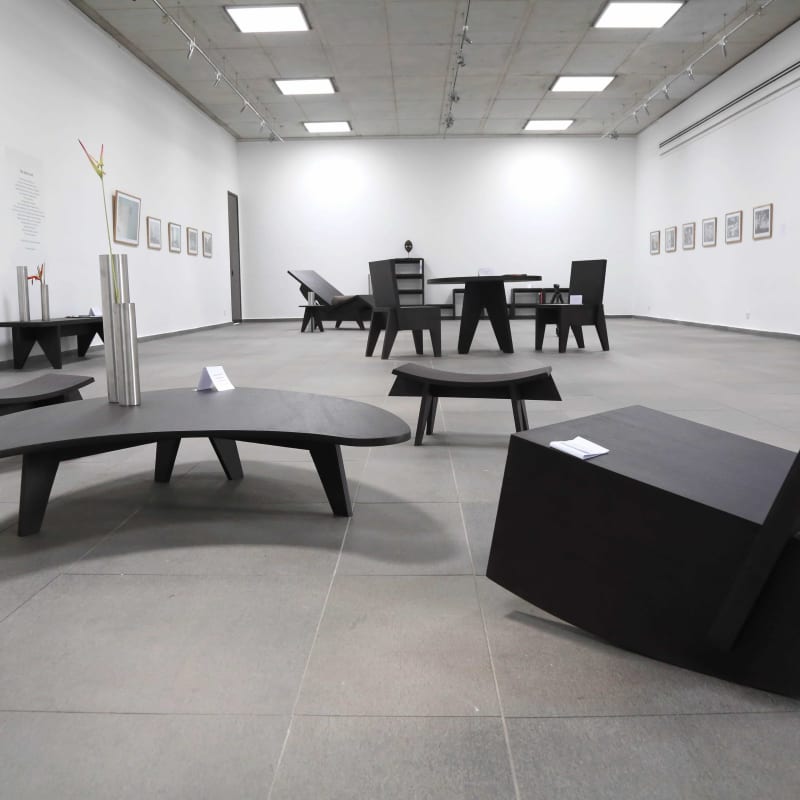LouiSimone Gallery again links design and photography with this exhibit of works by Issa Diabaté and Macline Hien.
Often these days people speak of design, whether referring to industrially produced objects for common consumption, buildings, or furnishings that are innovative in form and material. Considered one of the major components of art theory, design is understood as growing out of the European industrial revolution from the 19th century to today. Its central question revolves around the tension between function (how the object is used) and the form it takes in the social environment. Modernity moves across borders and technological innovations are within the reach of creators, artists, and designers from all countries. Photography earned its artistic standing, its title of nobility, in the 20th century. It broke with the inherited traditions of representative portraiture, and all the other arts followed suit. Photography creates meaning through connection, proximity, and association; it shows, instead of explaining, and leaves a mark, an imprint. Land art, body art, ephemeral installations, happenings… : none of this would have come about were it not for photography.
Issa Diabaté, an architect-designer originally from Côte d’Ivoire, knows well the traditional furniture of his country: its wooden stools, its royal thrones, its chairs made from two interlocking planks, known as “chaises de gardien” (“African Guardian Chairs”).
A graduate of Yale University (USA), Issa Diabaté draws on these traditional models and offers us a range of furnishings born of his creative imagination and technological innovation. Just like Piet Mondrian (1872-1944), he privileges a geometric order in his use of vertical and horizontal lines. The recipient of both the European Community Prize at the Dakar Biennal (Sénégal) in 1998, and of the “Robert Allen Award” (USA) in 1995, Issa Diabaté is recognized for his research and his innovation. His genius, his seriousness, and his simplicity are evident in his many buildings and furnishings found both in Côte d’Ivoire and abroad.
Issa embodies well this statement by Cheikh Anta Diop (1923-1986), who said about the African artist: “What characterizes the African artist is his creative freedom. The artist is confident in his genius, certain of the authenticity of his inventions. As a result, his works are realized with an impressive simplicity.”
Macline Hien, who was trained exclusively at the Institut Supérieur des Arts et de l’Action Culturelle [INSAAC], works on the margins of the market in commercial photographic portraiture, and outside the economy of survival, to reappropriate images and affirm his point of view. Swathed in silence to make itself heard: her photography reveals itself. In silence, her photographs scream—a scream with a message of resistance and resilience that we can all understand.
The effort toward openness heals wounds; it conceives of a vision and dresses the lesion. The absence of human figures underscores the presence of their actions. With an art brut esthetic, sober and tempered, articulated with pure lines, Macline Hien lays her cards on the table: see Man’s invisible face.
As society’s witness, a historian of the passing decades, Macline offers a poetics of light and human shadow, and calls on us to keep our rendezvous with peace. Hers is the most expansive of cities: human awareness.
Through her lens, Macline expresses her internal world and invites us to think along with her: the silence that emanates from her work calls us to reflection and introspection.



